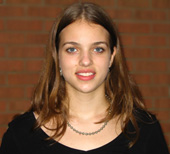What is the transition planning process for students with disabilities?
Page 2: Person-Centered Planning
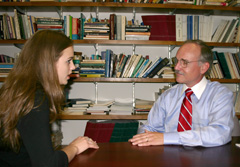 The staff members at Phelan Jr./ Sr. High use a person-centered planning approach to deliver transition services to students with disabilities. With a person-centered planning approach, the transition services a student receives are defined by the student’s needs, focus on the student’s individual strengths and capacities, and acknowledge disability-specific issues. The student and the student’s family are highly involved in the transition process. Consideration must also be given to the family’s cultural and ethnic heritage when using the person-centered approach to transition.
The staff members at Phelan Jr./ Sr. High use a person-centered planning approach to deliver transition services to students with disabilities. With a person-centered planning approach, the transition services a student receives are defined by the student’s needs, focus on the student’s individual strengths and capacities, and acknowledge disability-specific issues. The student and the student’s family are highly involved in the transition process. Consideration must also be given to the family’s cultural and ethnic heritage when using the person-centered approach to transition.
Active Participation in the IEP
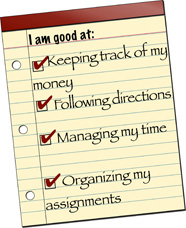
Part of person-centered planning also entails the student’s participation in the IEP meeting. In general, when students are encouraged to actively participate in their IEP meeting, they should:
- Prepare for the IEP meeting
- Receive support and encouragement during the IEP meeting
- Be provided with follow-up after the IEP meeting
- Share information about their disability and accommodations that they find useful.
- Provide a summary of their learning strengths and weaknesses, as well as interests and goals
- Participate in role-playing activities to help them feel more at ease
After the meeting, the school counselor (or other school personnel) and the student should discuss what he or she viewed as successful and what they would like to do differently in future meetings.
Amy Harris shares her thoughts about the ways in which counselors can help to make the transition process a more person-centered experience for students with disabilities (time: 1:14).
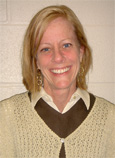
Transcript: Amy Harris
The most important thing is that I want counselors to know that my child is more like other children than different. I think my child has her own individual strengths and needs. She has her own mind and is able to make her own decisions. I think it’s important for the counselors to give her choices, to explain the process to her, to include her as much as possible, and to respect her as an individual.
Counselors can start by informing the child about the IEP process. I think the more the child knows about what’s going to happen and has the opportunity ahead of time to meet with the counselor so that they can be prepped and be able to share their thoughts––what they wanna talk about in the IEP, what’s really important to them, what their goals are, and then an understanding what’s going to happen, who’s gonna be there, what the agenda’s gonna be, how much time is gonna occur, and what the expectations of the students are––I think those should all be set up ahead of time, because otherwise I think you’re gonna have a child who’s floundering in a meeting and doesn’t really understand their role in it.
Establishing Post-Secondary Goals
In keeping with person-centered planning, Mr. Hunter and the rest of the IEP team must remember that adult life encompasses a range of activities. These activities can be categorized into the major domains listed in the table to the right. The first three—education/ training, employment, and independent living (when appropriate)—are required by IDEA. The remaining domains are helpful for planning for the future, but they are not required for transition planning under IDEA’04. Click here to review a more detailed list of what may be included under each domain. Although every student may not achieve the same level of functioning in all domains, school personnel should help each student consider the extent to which he or she might participate in all areas of adult life.
| Transition Planning Domains | |
|---|---|
| Mandated by IDEA: | |
| Education/ Training | |
| Employment | |
| Independent Living | |
| Other Areas to Consider: | |
| Leisure Pursuits | |
| Community Involvement | |
| Physical and Emotional Health | |
| Personal Responsibility and Relationships | |
Transition Planning Domains
| Domain | Subdomain |
| Education/ Training |
|
| Employment |
|
| Independent Living |
|
| Leisure Pursuits |
|
| Community Involvement |
|
| Physical and Emotional Health |
|
(Close this panel)
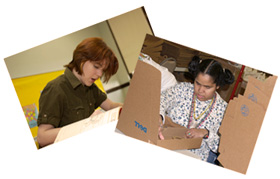 At Phelan Jr./ Sr. High School, students should begin the transition process by developing statements describing their future goals in all the major life domains. In some cases, students may require help to create their goal statements; in all cases, students will meet with school personnel to review their goals. School counselors, families, and other staff will use each student’s post-secondary goals as a guide to help address his or her curricular and service needs.
At Phelan Jr./ Sr. High School, students should begin the transition process by developing statements describing their future goals in all the major life domains. In some cases, students may require help to create their goal statements; in all cases, students will meet with school personnel to review their goals. School counselors, families, and other staff will use each student’s post-secondary goals as a guide to help address his or her curricular and service needs.
Identifying Measurable Post-Secondary Goals
Once students have identified their future goals in the major life domains, they are ready to explore their post-high school choices. The secondary transition planning process should include measurable post-secondary goals for the required areas:
Education/ Training: Goals in this category address education or training for a specific vocation or career. This may include a vocational training program, an apprenticeship, on-the-job training, job corps, a technical training program or college, a two-year college, and a four-year college or university. Goals in this area may also address training for independent living.
Employment: Goals in this category address paid employment (e.g., competitive, sheltered, integrated or supported), unpaid employment (volunteer, in a training capacity), and military service.
integrated (or supported) employment
An employment setting in which the individual with a disability receives necessary support to learn and maintain a job. For example, a job coach would provide one-on-one training, modeling, and feedback to an employee with a disability while also providing the employer with necessary information.
Independent Living: When appropriate, these goals address living independently, managing finances, utilizing transportation, and accessing adult services.
adult services
Services available to individuals with disabilities who meet certain eligibility requirements and that typically include three categories: employment services, social security and health services, and community living and support services. Vocational rehabilitation services and supported employment are examples of adult services. In some cases, these services are provided through agencies that also serve persons without disabilities (e.g., Medicaid, food stamps).
For Your Information
Students should be asked to identify their post-school goals with increasing specificity each school year.
Achieving Measurable Post-Secondary Goals
The transition process typically focuses on academic, employment, and independent living skills. This is particularly important for adolescents or young adults with disabilities because the transition plan often requires:
- Collaborative programming between the school and the community (or post-secondary setting)
- Direct instruction in natural settings (e.g., job sites, bus stops)
- Opportunities to problem-solve strategies and instructional plans
School counselors, teachers, family members, and other individuals contribute to students’ attainment of their dreams and aspirations. When family members, significant role models, and school personnel support students with disabilities in developing measurable post-secondary goals for life, more of these goals are reached. Individuals involved in the transition process can help students successfully achieve their post-secondary goals by guiding them through the tasks outlined in the table below.
| Deciding | Encourage each student to create goals for his or her life after high school. These goals should be stated in measurable terms. At a minimum, goals should address education/ training, employment, and independent living; however, they may also address other life domains. |
| Planning | Work with each student to develop a long-term plan that outlines the steps required to achieve his or her future goals. |
| Preparing | Help the student choose classes and other opportunities that enable the student to obtain needed skills (e.g., job skills, work-related social skills) and competencies needed to achieve his or her goals. |
| Carrying out the plan | Identify necessary post-school services, supports, or programs and connect the student and his or her family to these services before the student leaves the school system. |
Transition Update - Sandra's Goals
Mr. Hunter helps Sandra develop her goals for several transition planning domains.
| Transition Area | Sandra’s Goal Statement | Measurable Post-Secondary Goal |
| Education/ Training | I want to train to be a nurse. | After high school, Sandra will attend a 2- or 4-year college and enroll in the nursing program. |
| Employment | I want to be a nurse. | After high school, and completion of the nursing program, Sandra will work full time as a nurse. |
| Independent Living | I want to live in my own apartment. | After high school, Sandra will live in her own apartment. |
| Leisure Pursuits | I will play tennis and walk my dog in the park. | After high school, Sandra will play tennis once per week and walk her dog in the park every day. |
| Community Involvement | I will get the paper every day. | After high school, Sandra will get the paper every day. |
| Physical and Emotional Health | I will exercise and eat healthy foods. | After high school, Sandra will exercise at least 3 times per week and eat at least 3 servings of fruits and vegetables every day. |
| Personal Responsibility and Relationships | I will visit my parents every week. | After high school, Sandra will visit her parents every week. |
